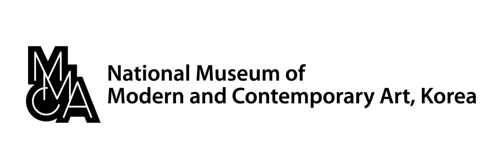March 12–June 7, 2020
99 Sejong-daero, Jung-gu
04519 Seoul
South Korea
Hours: Tuesday–Sunday 10am–7pm,
Wednesday and Saturday 10am–9pm
T +82 2 2022 0600
Gang Byung-in, Ko Bongju, Kwon Chang-ryun, Kim Kyujin, Kim Ki-seung, Kim Ki-chang, Kim Donhui, Kim Yongjun, Kim Eunghyun, Kim Zhongkun, Kim Chong Yung, Kim Tschang-yeul, Kim Choonghyun, Kim Tae-seok, Kim Whanki, Nam Kwan, Park Daesung, Park Won-gyu
MMCA’s special exhibition Modern and Contemporary Korean Writing probes the roles and meanings of calligraphy in Korea’s modern and contemporary visual culture and art.
It sheds a new light on how traditional calligraphy has developed into contemporary calligraphy after going through diverse stages in the modern era. The exhibition features a total of 370 works in calligraphy, seal carving, painting, sculpture, ceramics, media art, and printed media, including those by the 12 first-generation Korean modern and contemporary calligraphers as well as contemporary and designed calligraphy works produced after the 2000s. It also unravels relations between calligraphy and other art genres and conveys the meaning of exhibiting calligraphy in the art museum.
The first section “Calligraphy in Painting and Painting in Calligraphy” examines calligraphy’s influence on painting or sculpture and demonstrates that calligraphy is another form of art. This section is organized into three themes to explore the relation between contemporary art and calligraphy. The first, “Poetry, Calligraphy, and Painting,” introduces modern and contemporary painters who have followed the theory of unity between poetry and painting to produce new literati paintings and spark a trend toward calligraphy and painting exhibitions. The “Letter Abstraction” section examines how literal elements in calligraphic construction and sentence composition are displayed in the picture plane. Lastly, the “Abstraction of Calligraphic Styles” displays how the quality, speed, rhythm, and spirit of a calligraphy brush can be reflected and manifested in painting and sculpture.
The second section “Calligraphy Mirrors the Calligrapher: The First Generation of Korean Modern and Contemporary Calligraphers” analyzes modernity of modern and contemporary calligraphy as well as changes in calligraphy culture through the works of the 12 first-generation Korean modern and contemporary calligraphers. These 12 artists were leading figures in Korean modern and contemporary calligraphy. Most of them were skilled at all five calligraphic styles (seal, clerical, regular, running, and cursive scripts). While going through turbulent periods of social, cultural, and artistic changes during the era of Japanese rule and after Korea’s liberation, they built their own visions while promoting the modernization of calligraphy. As these artists create calligraphy reflecting their artistic merits, lives, and personalities, their works demonstrate that calligraphy mirrors the calligrapher.
The third section “Calligraphy Revisited: Experimental and Unconventional Contemporary Calligraphy” revolves around unconventional and experimental contemporary calligraphy by the second-generation calligraphers trained under the first-generation. It questions expandability and artistic values in diversified and individualized contemporary calligraphy, thus paying attention to “revisited calligraphy.” Traditional calligraphy ultimately pursues the unity of sentence and calligraphy. However, contemporary calligraphy regards calligraphy not as something to be read but as something to be viewed by focusing on calligraphic images rather than the content or the legibility of letters. This approach reflects the general trend of contemporary art and eases communication and convergence with other fields, thus expanding functions of calligraphy as fine art.
The fourth section “Designed Calligraphy in Everyday Life” introduces diversity and expandability of designed calligraphy and deals with calligraphy culture in daily life and letters within contemporary society. “Calligraphy,” a “visual art of handwriting,” is the expansion of calligraphy, while “typography” refers to letters designed for better readability and appearance. Both calligraphy and typography embody practicality and artistic merit. In this light, artworks featured here imply calligraphy’s diverse roles, categories, and expandability through various mediums.


